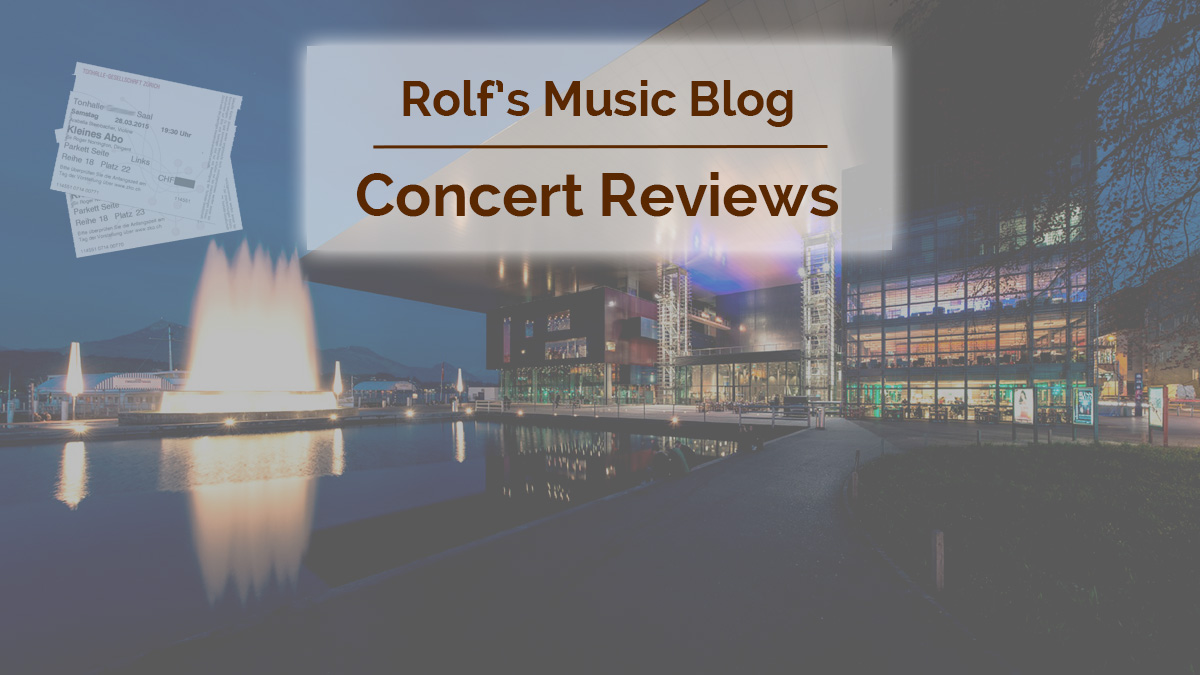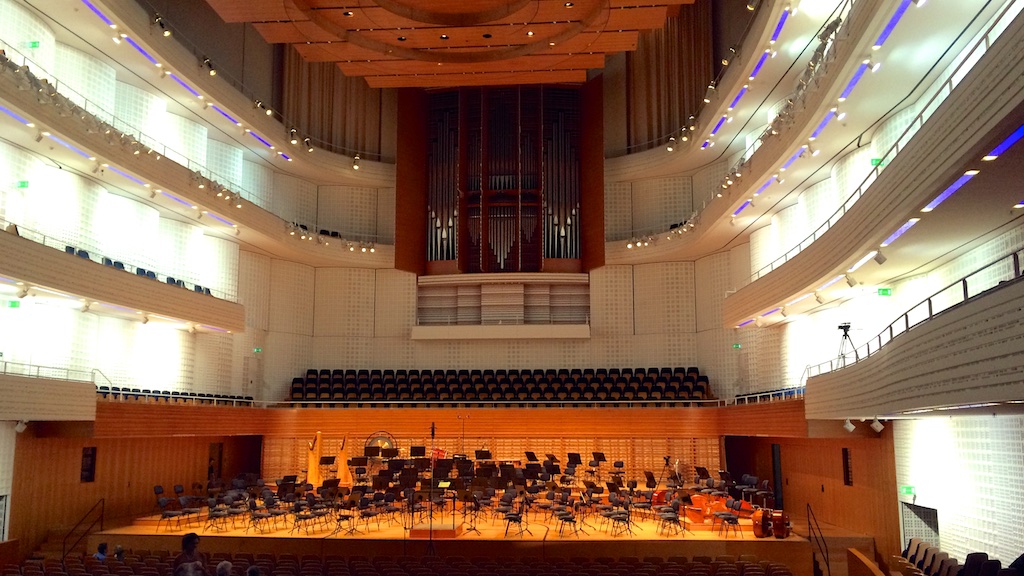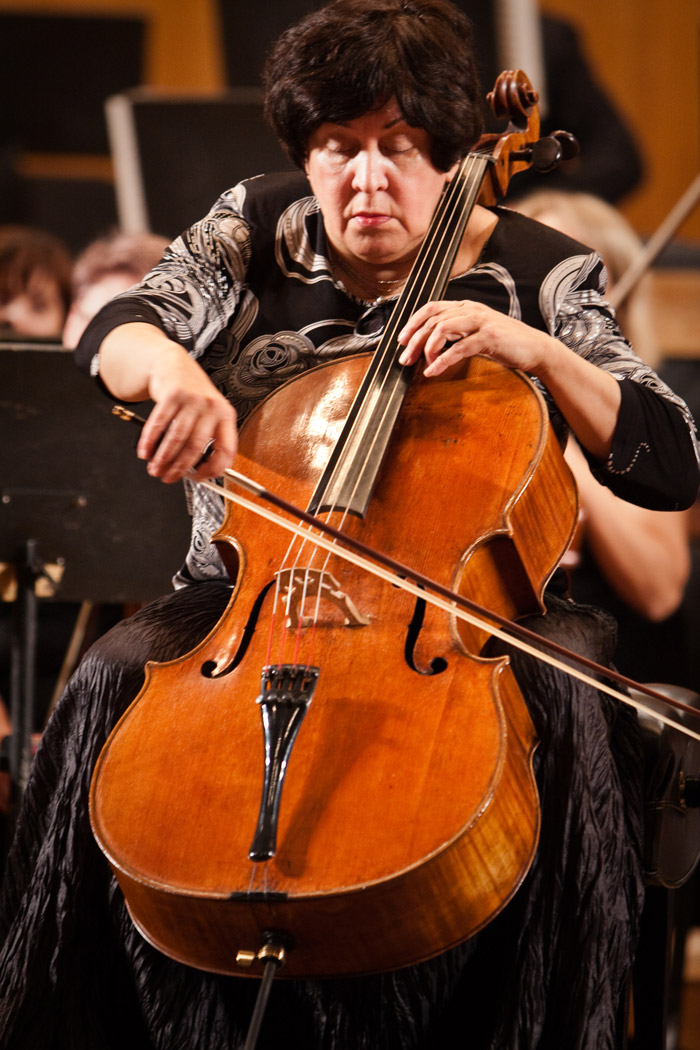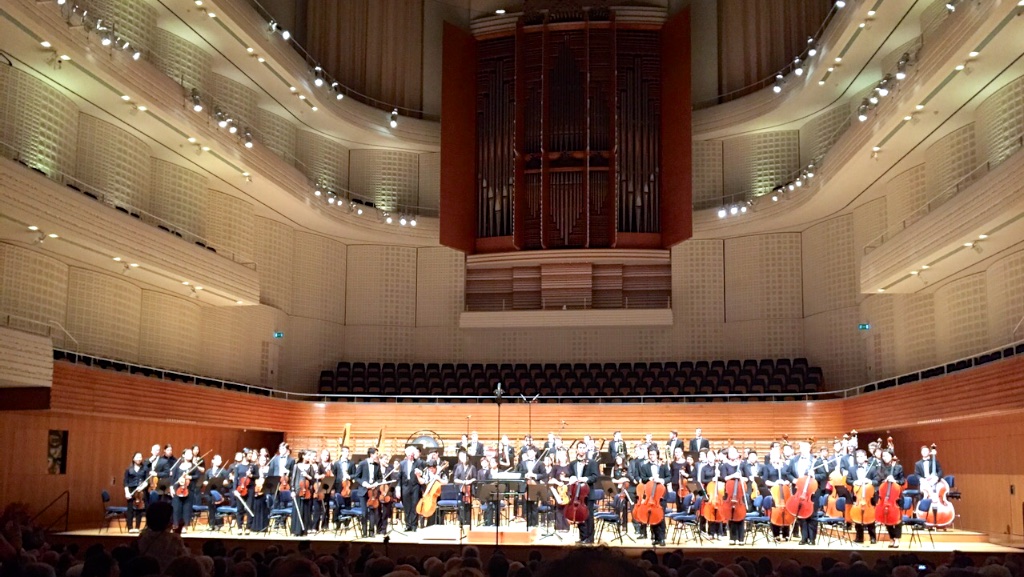Natalia Gutman, Benjamin Zander, Boston Philharmonic Youth Orchestra
Shostakovich, Dvořák, Bartók
KKL Lucerne, 2015-06-29

2015-07-04 — Original posting
2016-08-05 — Brushed up for better readability
Table of Contents
- Introduction — The Orchestra
- Dmitri Shostakovich (1906 – 1975): Festive Overture
- The Soloist
- Antonín Dvořák (1841 – 1904): Concerto for Cello and Orchestra in B minor op.104, B.191
- Encore — Johann Sebastian Bach (1685 – 1750): Suite No.3 for Cello solo in C major, BWV 1009 (Bourrée I + II)
- Béla Bartók (1881 – 1945): Concerto for Orchestra, Sz.116 / BB 123
- Encore II — Edward Elgar (1857 – 1934): Enigma Variations (Nimrod)
- Addendum 1:
- Addendum 2: Scores
- Addendum 3: Videos
Introduction — The Orchestra
The Boston Philharmonic Youth Orchestra emerged in 2013 and now has over 110 active members, aged 11 – 21. After just three years, it already plays a key role within musical education and music life in the Boston and New England area. Two years ago, the orchestra made a tour to The Netherlands. This concert was the final one on their second tour to Europe. This time, the orchestra spent two weeks traveling to the Czech Republic, to Berlin, and to Switzerland.
The orchestra rehearsed for four hours every Saturday, since last September. They are now traveling with two programs and 7 programmed pieces. Apart from a Mozart overture (“Le Nozze di Figaro”), their tour repertoire just featured late romantic (Dvořák, Strauss, Ravel, Schönberg) and 20th century music (Shostakovich, Bartók). These are demanding compositions throughout, and an amazing achievement for a youth orchestra. The young musicians stood under the direction of Benjamin Zander, a British-American conductor with German roots (born in London, 1939). Zander is a fatherly figure, a diligent and enthusiastic leader to all the young and promising musicians in the orchestra. He is also an eloquent commentator during the concert.
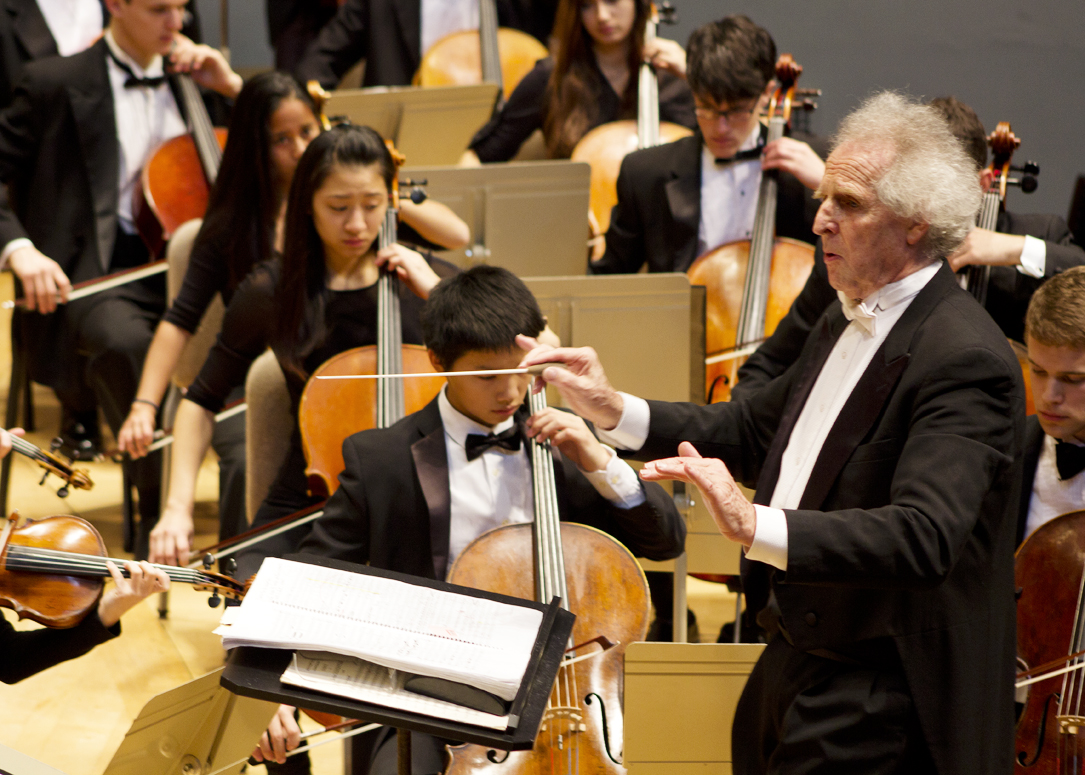
Dmitri Shostakovich (1906 – 1975): Festive Overture
The concert opened with the Festive Overture by Dmitri Shostakovich (1906 – 1975). The composer wrote this piece within a mere 3 days in 1954, upon a short-term request, for the celebration of the 37th anniversary of the Russian Revolution. The overture is just 6 minutes. Still, it sounds like a miracle that Shostakovich was able to write that many notes in such a short time! The composer wanted to please the audience, taking the overture to the opera “Ruslan and Lyudmila” by Mikhail Glinka (1804 – 1857) as a model. The overture is easy to understand, harmonically traditional, enjoyable and enthralling. One should keep in mind that 1954 was the year after Stalin’s death. The music probably also reflects the relief that the composer must have felt after the menacing, dark periods of oppression.
This composition has seen performances at popular events, such as the 1980 Summer Olympics in Moscow, or the Nobel Prize Award ceremony 2009. It demands substantial virtuosity, particularly in the area of rhythmic coordination, as well as in the fast passages for wind instruments. It’s a true orchestral showpiece.
The Performance
Zander started in a fresh, but not exaggerated tempo. He knows exactly how far he can go with his young musicians. It was a splendid opening, played enthusiastically, enthralling; maybe not always with quite the ultimate precision, but nevertheless fascinating, justifying the enthusiastic applause. The most frenetic part of the applause came from a substantial fan community of family, friends and colleagues traveling with the orchestra.
The Soloist
Before leaving the stage, Zander eloquently introduced the soloist, Natalia Gutman, as one of the last of the great Russian musicians of her generation. He was referring to artists such as Mstislav Rostropovich (1927 – 2007), David Oistrakh (1908 – 1974), Sviatoslav Richter (1915 – 1997), Emil Gilels (1916 – 1985), etc.). It speaks for the acoustics of the hall (as if such a proof was needed!) that the conductor’s words (in English and without microphone) could be understood easily throughout the auditorium.
Antonín Dvořák (1841 – 1904): Concerto for Cello and Orchestra in B minor op.104, B.191
The central part of the program was the Concerto for Cello and Orchestra in B minor op.104, B.191 by Antonín Dvořák (1841 – 1904). In this work, the challenges for the orchestra were entirely different. The overture featured sheer, extroverted virtuosity. But here, the orchestra needs to adopt the Czech “national style”, a style now largely defined through music written by Antonín Dvořák and Bedřich Smetana (1824 – 1884). On top of that, the orchestra is accompanying a cello. That’s a situation presenting particular challenges in dynamic balance and transparency, especially with a large ensemble such as this one. It’s a challenge both on the part of the composer, as well as for the orchestra.
The Performance
The orchestral introduction sounded a tad superficial. It appeared to lack the typical Slavonic agogics, such as that short hold-up (the mere hint of a ritardando) preceding a climax, or, more generally, the playing with weights of the beats within a bar. But that may be difficult to realize with such young musicians who are not intimately familiar with Slavonic music.
However, that first impression immediately paled once Natalia Gutman started playing. Now, on top of the specifics of Dvořák’s late composition, there was the additional challenge of having to adapt to an eminent master’s mature playing and interpretation. The amount of challenge was obvious right from the beginning. Natalia Gutman’s playing for sure is anything but superficial or just straightforward. It sounded as if she wasn’t able or willing to adjust to the orchestra’s youthful performance style. Already with the initial risoluto she marked a clearly slower tempo. And this even slowed down considerably with the heavy, descending forzato chords.
Zander did his best to adjust to the soloist’s tempo. But I did not sense a real dialog or a unity between the soloist and the accompaniment. Different from the orchestra, Natalia Gutman played with a rich rubato, exploring the depth, the melodic strength of Dvořák’s composition with her dense, soft and singing tone. The orchestra strived to follow along, with limited success.
Natalia Gutman’s Playing
Often, in lyrical passages, the soloist appeared completely immersed into the music, listening and playing with closed eyes. In some of these passages it would have been advantageous if the conductor had been holding back the orchestra a bit, especially the wind instruments. Despite the excellent acoustics it was sometimes hard to catch the fine details in Gutman’s playing. The discrepancies in style and tempo between solo and accompaniment continued in the following movements. Natalia Gutman showed a preference for moderate, measured, and thoughtful tempi.
Young vs. Mature?
The last movement probably included the best moments in this concerto, when solo and orchestra appeared to find a common ground. But also here, there were passages where Natalia Gutman dictated her own, slower tempo. On the part of the soloist, this definitely was a very emotional, often introverted interpretation. But overall it may have been a bit over the top to combine a seasoned grand master of the cello with an orchestra as young as this one.
In some concerts on the current tour, the same concerto was played by Jonah Park Ellsworth, a young soloist from within the orchestra. This must have made it even more difficult for the orchestra to adjust to and adopt Natalia Gutman’s interpretation style. But apart from these issues of adapting to the soloist, the orchestra managed its part fairly well, maybe with the occasional exception oF minor intonation issues in the brass section.
Encore — Johann Sebastian Bach (1685 – 1750): Suite No.3 for Cello solo in C major, BWV 1009 (Bourrée I + II)
The applause was rewarded with Natalia Gutman playing the two Bourrées from the Suite No.3 for Cello solo (in C major, BWV 1009) by J.S. Bach. Her interpretation was lyrical, with a soft, never aggressive tone. It’s maybe a questionable fit for the Dvořák, but almost unavoidable, given the limitations in the solo repertoire for cello.
Béla Bartók (1881 – 1945): Concerto for Orchestra, Sz.116 / BB 123
After the intermission we again heard the orchestra alone, in the Concerto for Orchestra by Béla Bartók (1881 – 1945). That “concerto” requires by the same, rich set of instruments as in the initial piece by Shostakovich, this time even with the addition of two harps. This is Bartók’s most popular composition, consequently atonal, and yet never really unfriendly or outlandish. Still, Benjamin Zander could not resist giving an eloquent and entertaining introduction into the composition.
The Performance
Here, the orchestra was again”in its home turf”. It was able to show its strengths: the dense sound of the many strings, and a really strong ensemble of wind instruments. They all were brilliant in the virtuosic first movement, creating an astounding volume and sound quality. The second movement, Allegro scherzando, “Giuoco delle coppie” (play of the couples), is a witty Scherzo. One wonders how the seriously ill composer (from his death-bed, as Zander stated) could create and spend that much humor!
The title refers to the fact that the wind instruments are playing by couples (two bassoons, then two oboes, then two clarinets, etc.), all with playful melodies. The composer avoids all impression of tonality by consequently having the couples play in odd parallels (seconds, minor thirds, minor seventh, etc.). The piece received a very entertaining interpretation, with an excellent “chorale part” in the center. I noted the very good intonation by the trumpets and trombones.
The middle movement (Andante, non troppo) is annotated “Elegy”; it starts in a menacing, holding mood, then builds up to catastrophic blows (falling scales), painful outcries in the wind instruments. But it is not entirely fatalistic: in the second half the composer appears to fight his destiny, and towards the end the music is more forgiving, almost confident.
Intermezzo interrotto
The fourth movement, Allegretto, “Intermezzo interrotto” (interrupted intermezzo) is rhythmically intricate, playing with Bohemian folk melodies, in typical Bartók / Hungarian manner. The meter is changing almost from bar to bar, leaving western ears “hanging in mid-air”. The orchestra’s playing was very good and appeared almost effortless.
The last movement appears comprehensible in its length. However, the music is very virtuosic and very complex, with its fugato sections.
And indeed, the orchestra was challenged in this movement, up to its limits, and maybe sometimes beyond: I noticed a slight decrease in precision and clarity, also occasional rhythmic coordination issues. But overall I would still call this concert a full success for the young musicians, who showed so much talent, skill, and enthusiasm for the music! The venue (KKL) wasn’t sold out by any means, unfortunately: I think the musicians deserved a better attendance!
Encore II — Edward Elgar (1857 – 1934): Enigma Variations (Nimrod)
This wasn’t just the end of the official program, but also the end of a two-week tour through Europe. It was definitely a very eventful time for all members of the orchestra. Benjamin Zander announced an encore, “Nimrod” from the Enigma Variations by Edward Elgar (1857 – 1934). That’s a very touching, soothing piece, emotionally almost too much for the orchestra. One noticed tears flowing with several players, probably due to a mix of relief after a demanding concert performance, sadness about the ending of the tour, and the perspective of flying home, back to family and friends…
Finally: Benjamin Zander and the Boston Philharmonic Youth Orchestra have been active on the Web. They have posted an insider blog with several posts about their 2015 tour through Europe (no longer available).
Addendum 1:
For the same concert, I have also written a (much shorter) review in German for Bachtrack.com. This posting is not a translation of that German review, the rights of which remain with Bachtrack. I create the German review using a subset of the notes taken during this concert. I wanted to enable my non-German speaking readers to read about my concert experience as well. Therefore, I have taken my original notes as a loose basis for this separate posting. I’m including additional material that is not present in the Bachtrack review.
Addendum 2: Scores
For those who are interested in these compositions and would like to study this music using a score, I have collected some links where you can purchase the scores for the key pieces:
- Dmitri Shostakovich, Festive Overture, pocket score: —Find pocket score on amazon.com (#ad) —
- Antonín Dvořák, Cello Concerto in B minor, op.104, pocket score: —Find pocket score on amazon.com (#ad) —
larger score in quarto format (12″ x 9″ / 30.5 x 23 cm): —Find score on amazon.com (#ad) — - Béla Bartók, Concerto for Orchestra, score in quarto format (12″ x 9″ / 30.5 x 23 cm): —Find score on amazon.com (#ad) —
Addendum 3: Videos
For those who are interested in knowing how the music by Shostakovich and/or Bartók from this concert sounds, I have collected a couple of YouTube recordings. These are not meant to be heard in comparison or otherwise relating to my experience in the above concert, except that I have listened to these (and others) in preparation for the concert. I would not want to rate these recordings relative to the concert: that would be unfair / incorrect.
For Shostakovich’s “Festive Overture” I have looked for YouTube recordings; first, a recording by a youth orchestra from Galicia / Spain. It is not too far (e.g., in the tempo and in the overall spirit) from the performance presented by Benjamin Zander and the Boston Philharmonic Youth Orchestra (video no longer available).
On the other hand, Mikhail Pletnev’s recording of the same piece is faster, more sporty, but (in my opinion) less fun to watch and listen:

